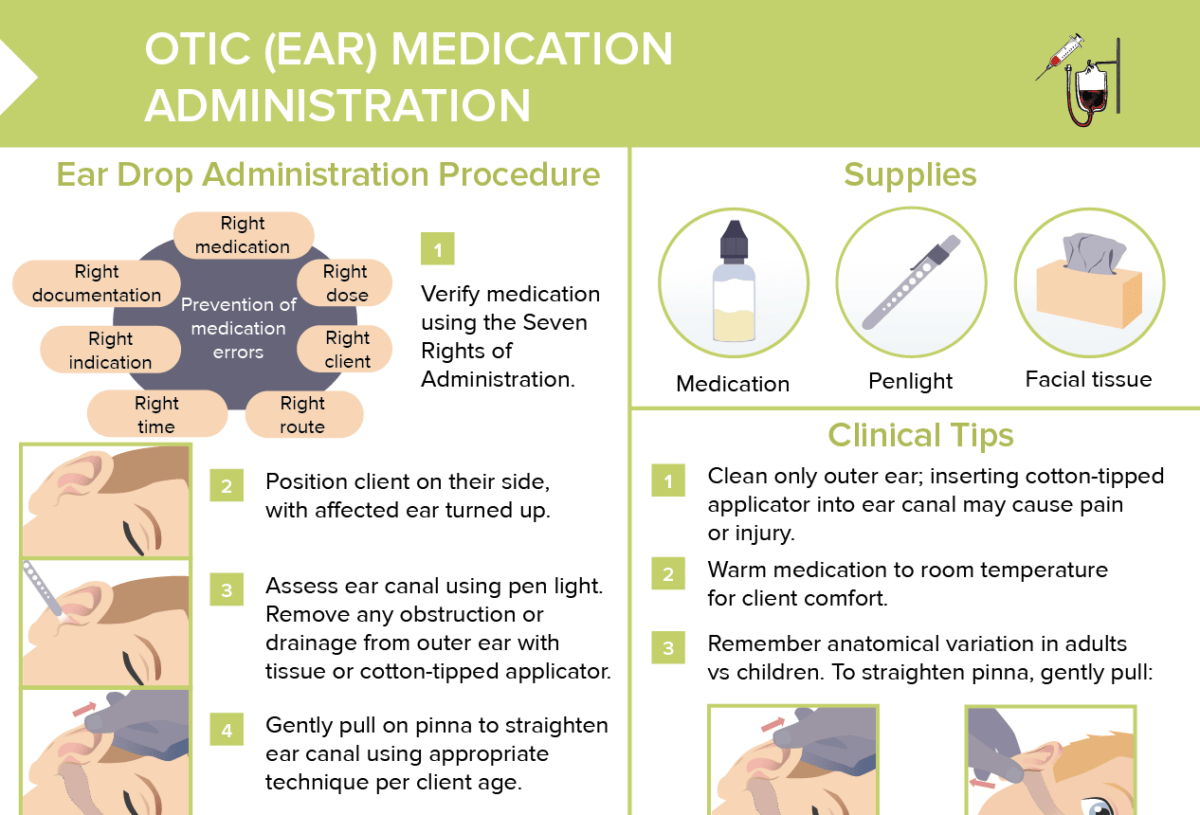What is otitis media?
Otitis media is the inflammation or infection (viral or bacterial) of the middle ear. It affects 10% of people globally each year; 50% of cases occur in children.
Related videos
What causes otitis media?
Otitis media can be caused by bacterial or viral infection, or allergic reactions. Risk factors are:
- Exposure to:
- Secondhand smoke
- Allergens
- Large groups of people
- Pacifier use
- Craniofacial abnormalities
What are the symptoms of otitis media in children and adults?
Symptoms in adults:
- Irritability
- Fatigue
- Loss of balance
- Fever
- Otalgia (ear pain)
- Difficulty hearing
Symptoms in children:
- Irritability
- Tugging at the ear
- Loss of balance
- Fever
- Otalgia (ear pain)
- Difficulty hearing
Nursing diagnosis for otitis media
The possible nursing diagnoses for otitis media can differ for adults and children.
Nursing diagnoses for otitis media may include:
- Acute pain related to inflammation and increased pressure from fluid accumulation in the middle ear
- Impaired verbal communication due to the pain or hearing impairment
- Disturbed sleep pattern related to pain and discomfort
- Anxiety related to the illness, especially if there are repeated episodes
In children, some additional nursing diagnoses could include:
- Acute pain may manifest differently in children who may not be able to articulate their discomfort: They may show signs of irritability, changes in eating habits, or pull at the affected ear.
- Ineffective coping as the child may exhibit behavioral changes due to the discomfort or pain associated with otitis media.
- Risk for delayed development: If otitis media is chronic or recurrent, it could potentially impact language acquisition and cognitive development due to impaired hearing.
Potential complications of otitis media
Potential complications include:
- Perforation of the tympanic membrane
- Speech or hearing delays or challenges
- Mastoiditis: infection of the mastoid space behind the ear
- Rarely: brain infections
What is the Eustachian tube and how does it differ in infants and adults?
The Eustachian tube is a tube that connects the middle ear to the back of the throat.
| Adults | Infants | |
| Length | Approx. 18 mm | Approx. 9 mm |
| Direction of drainage into throat | More vertical, assisted by gravity | Horizontal |
How to treat otitis media
- OTC analgesics (NSAIDs or acetaminophen)
- Antibiotics if caused by a bacterial infection
- Decongestants
- Antihistamines
- Tympanostomy tubes for recurrent cases
- Rest
Nursing interventions for otitis media in children
- Pain management; promote comfort and rest
- Administer antibiotics as ordered
- Monitor vital signs (temperature!), pain levels, behavior changes
- Educate parents/caregivers about signs of complications and preventive measures
- Tympanostomy tubes for recurrent cases

